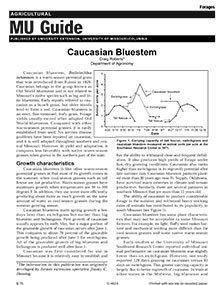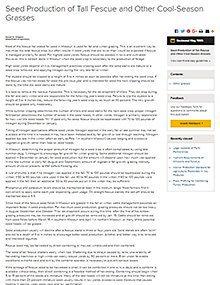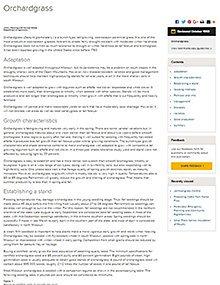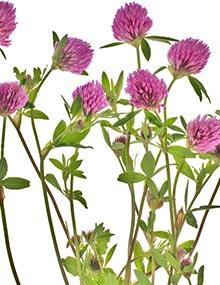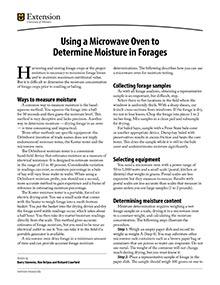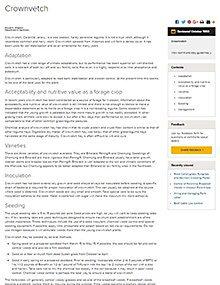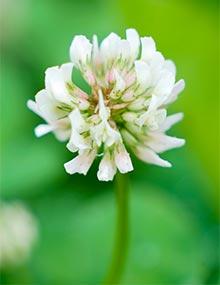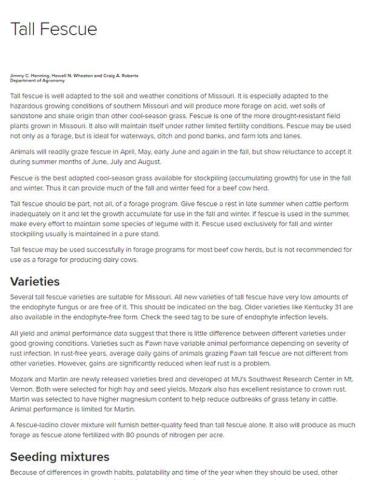The following publications cover topics related to Forages. For a complete list of MU Extension publications, visit the main Publications page.
Caucasian Bluestem
Reviewed
Using NDF and ADF to Balance Diets
Reviewed
Using NDF and ADF to Balance Diets can help improve animal performance. Visit our website today to learn more.
Orchardgrass
Reviewed
Orchardgrass is a productive cool-season grass that responds to good fertility and management practices by producing up to 4 tons of high quality forage per acre. Learn how to establish and manage a stand of orchardgrass in this MU Extension guide.
Corn Silage
Reviewed
Corn silage is a popular forage for ruminant animals because it is high in energy and digestibility. Visit our site to learn more about corn silage.

Birdsfoot Trefoil
Reviewed
Birdsfoot trefoil is a long-lived perennial legume ideally suited for many grass-legume pastures in Missouri. It grows and produces forage during July and August when most cool-season grasses are semi-dormant. Trefoil does not cause bloat, as do many other commonly used legumes.
Reed Canarygrass, Ryegrass, and Garrison Creeping Foxtail
Reviewed
Reed canarygrassReed canarygrass is a tall-growing, cool season perennial with a rhizomatous root system (it roots by sending out runners).
Forages for Cattle: New Methods of Determining Energy Content and Evaluating Heat Damage
Reviewed
Improved system of forage analysisThe crude fiber method of feed analysis has been used for more than 100 years. Although this method was an important first attempt at determining the energy content of feeds, it has a number of shortcomings.
Red Clover
Reviewed
Red clover is the most widely grown of all the true clovers. Visit our website today to learn more about red clovers.
Establishing Birdsfoot Trefoil in Bluegrass Sod
Reviewed
Birdsfoot trefoil and Kentucky bluegrass will produce three times as much beef as unimproved bluegrass. Even heavily fertilized bluegrass will produce only 65 percent as much animal product as trefoil-bluegrass combination. See Table 1.
Using a Microwave Oven to Determine Moisture in Forages
Reviewed
Harvesting and storing forage crops at the proper moisture is necessary to minimize forage losses and to maintain maximum nutritional value. But it is difficult to determine the moisture concentration of forage crops prior to ensiling or baling.
Crownvetch
Reviewed
Crownvetch, Coronilla varia L., is a cool season, hardy, perennial legume. It is not a true vetch, although it resembles common and hairy vetch. Crownvetch spreads from rhizomes and will form a dense cover. It has been used for soil stabilization and as an ornamental for many years.
Alfalfa
Reviewed
Alfalfa is the most productive legume for Missouri. Visit our website today to learn more about Alfalfa.
Making and Storing Quality Hay
Reviewed
Properly making and storing hay and greatly reduce dry matter loses. Visit our site to learn about Making and Storing Quality Hay.
The Bluegrasses
Reviewed
White, Ladino and Sweet Clover
Reviewed
White and ladino cloverWhite clover is a stoloniferous plant with a shallow root system. The primary stems of white clover usually die before the second year, and the life of the plant depends upon the stolons and their haphazard roots.
Tall Fescue
Reviewed
Tall Fescue is one of the more drought-resistant field plants grown in Missouri. Visit our website today to learn more.
Renovating Grass Sods With Legumes
Reviewed
Many Missouri pastures have adequate grass stands, but they need legumes. If the soil is capable of growing them, legumes should be established in grass sods. Establishing clovers is cheaper than topdressing the grass with nitrogen.
